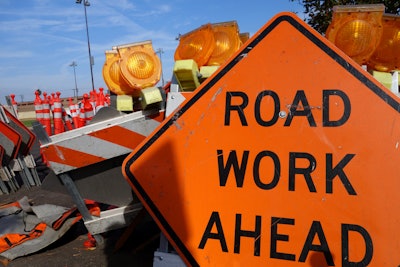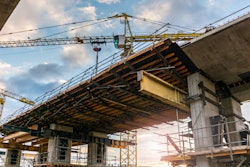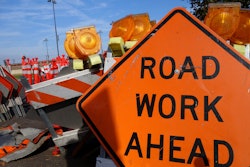
The Federal Highway Administration has announced $6.4 billion heading to states over five years to help reduce carbon emissions through infrastructure projects, including use of low-carbon pavement technologies, according to the National Asphalt Pavement Association.
The new Carbon Reduction Program, which is part of the $1 trillion infrastructure law, includes funding for such projects as electric-vehicle charging stations, building public transportation corridors and creating walking and biking trails.
The program’s guidance also includes low-carbon asphalt pavements, NAPA says.
Low-carbon highway pavement projects would be eligible if a lifecycle assessment demonstrates that the low-carbon pavement would lead to significant reductions on carbon-dioxide emissions when compared to typical pavement practices, according to NAPA. The lifecycle assessment can be calculated by using FHWA’s LCA Pave Tool that can determine the carbon-dioxide impacts of pavement material and design decisions.
NAPA says the CRB guidance is not a mandate, “but a free-market approach to utilize ready-to-go pavement technologies that reduce carbon emissions.”
“As the sector generating the most carbon emissions in the U.S. economy, transportation must play a leading role in solving the climate crisis,” said U.S. Transportation Secretary Pete Buttigieg. “The Carbon Reduction Program will help reduce pollution from transportation and move us closer to the President’s ambitious goal of cutting emissions in half by 2030.”
“This new program provides states and local agencies in both urban and rural areas the flexibility and funding needed to reduce emissions and build a more sustainable transportation network that will benefit all travelers,” says Deputy Federal Highway Administrator Stephanie Pollack. “The Bipartisan Infrastructure Law makes transformative investments in our nation’s transportation infrastructure, and this is one of the key programs that will help address the climate crisis.”
The funding would be spread out from 2022 to 2026.
Here’s a breakdown from the FHWA on how much each state would receive over five years:
State
Estimated 5-Year Total
Alabama
128,343,911
Alaska
81,878,583
Arizona
117,325,887
Arkansas
86,993,865
California
555,295,299
Colorado
85,983,748
Connecticut
79,181,352
Delaware
27,098,325
Dist. of Col.
25,674,472
Florida
320,386,861
Georgia
210,930,745
Hawaii
27,289,225
Idaho
47,067,526
Illinois
225,633,212
Indiana
156,185,245
Iowa
82,572,650
Kansas
63,297,324
Kentucky
111,888,685
Louisiana
118,344,665
Maine
29,941,837
Maryland
94,377,768
Massachusetts
93,705,892
Michigan
168,587,505
Minnesota
106,713,242
Mississippi
81,289,039
Missouri
158,551,878
Montana
68,117,913
Nebraska
47,947,499
Nevada
57,169,952
New Hampshire
26,647,302
New Jersey
154,483,918
New Mexico
61,245,402
New York
257,806,980
North Carolina
170,984,555
North Dakota
40,894,061
Ohio
214,687,250
Oklahoma
106,962,692
Oregon
82,547,230
Pennsylvania
264,847,619
Rhode Island
35,787,935
South Carolina
112,761,276
South Dakota
46,430,937
Tennessee
139,172,276
Texas
641,277,338
Utah
57,300,524
Vermont
32,831,293
Virginia
165,786,199
Washington
109,987,472
West Virginia
72,814,410
Wisconsin
124,681,249
Wyoming
42,287,975
Total
6,419,999,998











